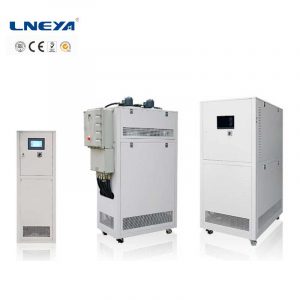hot oil heat transfer systems
Hot Oil Heat Transfer Systems: A Comprehensive Guide
Introduction
Hot oil heat transfer systems are advanced thermal management solutions designed to provide efficient and consistent heating for industrial processes. These systems use thermal oil as a heat transfer medium, offering precise temperature control and high thermal stability. This article explores the working principles, components, applications, and benefits of hot oil heat transfer systems, providing a detailed understanding of their role in modern industrial operations.

Working Principles
Hot oil heat transfer systems operate by circulating thermal oil through a closed-loop system, where it absorbs heat from a heater and transfers it to the process equipment. The key principles include:
Heat Generation:
A heater, typically powered by electricity, gas, or oil, heats the thermal oil to the desired temperature.
Heat Transfer:
The heated oil is circulated through a network of pipes and heat exchangers, transferring heat to the process equipment.
Cooling and Recirculation:
After transferring heat, the oil is cooled and recirculated back to the heater, completing the cycle.
Components of Hot Oil Heat Transfer Systems
Heater:
The heater is the core component that heats the thermal oil. It can be powered by various energy sources, including electricity, gas, or oil.
Thermal Oil:
Thermal oil is the heat transfer medium, chosen for its high thermal stability and efficiency. Common types include mineral oils and synthetic oils.

Pump:
The pump circulates the thermal oil through the system, ensuring a steady flow and consistent heat transfer.
Heat Exchangers:
Heat exchangers facilitate the transfer of heat from the thermal oil to the process equipment. They can be of various types, including shell-and-tube and plate heat exchangers.
Expansion Tank:
The expansion tank accommodates the expansion and contraction of the thermal oil as it heats and cools, maintaining system pressure.
Control System:
The control system regulates the temperature and flow of the thermal oil, ensuring precise and consistent heat transfer.
Applications of Hot Oil Heat Transfer Systems
Chemical Processing:
Hot oil systems are used in chemical reactors, distillation columns, and other processes requiring precise temperature control.
Food Production:
In the food industry, these systems are used for cooking, frying, and sterilization processes, ensuring consistent product quality.
Manufacturing:
Hot oil systems are used in manufacturing processes such as plastic molding, rubber vulcanization, and metal treatment.
Oil and Gas:
In the oil and gas industry, hot oil systems are used for heating crude oil, natural gas, and other hydrocarbons.
Textiles:
Textile manufacturing processes, such as dyeing and drying, rely on hot oil systems for consistent and efficient heating.
Benefits of Hot Oil Heat Transfer Systems
High Temperature Capability:
Hot oil systems can achieve and maintain high temperatures, making them suitable for demanding industrial applications.
Energy Efficiency:
These systems are designed to be energy-efficient, reducing operational costs and environmental impact.
Precise Temperature Control:
Hot oil systems offer precise temperature regulation, ensuring consistent and reliable results.
Long Service Life:
High-quality thermal oils and robust system design contribute to the long service life of hot oil heat transfer systems.
Maintenance Tips
Regular Inspection:
Periodically inspect the system for signs of wear, leaks, or degradation of components.
Oil Analysis:
Regularly analyze the thermal oil to detect contamination or degradation, ensuring optimal performance.
Cleaning:
Clean the heat exchangers and other components to prevent fouling and maintain efficient heat transfer.
System Calibration:
Calibrate the control system regularly to ensure accurate temperature and flow regulation.

Safety Considerations
Temperature Monitoring:
Continuously monitor the system temperature to prevent overheating, which can lead to oil degradation or system failure.
Proper Ventilation:
Ensure adequate ventilation to prevent the buildup of fumes or vapors, especially when working with high-temperature oils.
Use of Protective Equipment:
Wear appropriate protective equipment, such as gloves and goggles, when handling thermal oil or maintaining the system.
Factors to Consider When Selecting a Hot Oil Heat Transfer System
Temperature Range:
Choose a system with a temperature range that meets your specific process requirements.
Energy Source:
Consider the availability and cost of energy sources, such as electricity, gas, or oil, when selecting a heater.
System Capacity:
Select a system with the appropriate capacity for your process, ensuring it can handle the required heat load.
Maintenance Requirements:
Consider the maintenance needs of the system and ensure you have the resources to perform regular upkeep.
Conclusion
Hot oil heat transfer systems are essential tools in various industries, providing efficient and consistent heating for a wide range of industrial processes. By understanding their working principles, components, and benefits, users can optimize the performance and reliability of these systems for their specific needs. Whether in chemical processing, food production, manufacturing, or oil and gas, hot oil heat transfer systems offer precise temperature control, energy efficiency, and long service life. Regular maintenance, safety considerations, and careful selection ensure optimal performance, making hot oil heat transfer systems a valuable investment for any industrial application requiring high-temperature heating.
Related recommendations
evaporator of chiller
334Definition and RoleIn a chiller system, the evaporator is where the refrigerant undergoes a phase change from a liquid to a vapor. It is designed to absorb heat from the chilled water or air flow...
View detailsCan’t the Temperature of the Industrial Chiller Drop?
1476Can't the Temperature of the Industrial Chiller Drop? Generally speaking, the cooling effect of industrial chillers is relatively good, but some users have reported that the temperature canno...
View detailsInstructions for Use of Heater Chiller Circulator
1323Instructions for Use of Heater Chiller Circulator Heater Chiller Circulator is a temperature control device that integrates refrigeration and heating. It is a dual-purpose temperature contr...
View detailscold chamber testing
429Introduction to Cold Chamber Testing Cold chamber testing refers to the process of evaluating materials and components in a controlled low-temperature environment. This testing is essential for...
View details
 LNEYA Chiller
LNEYA Chiller






HelloPlease log in